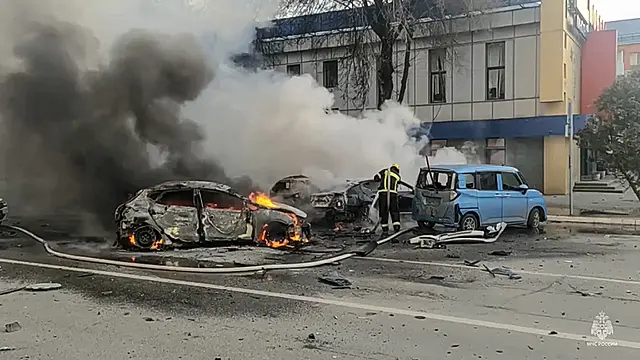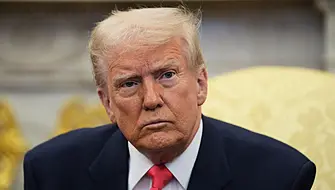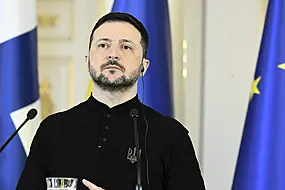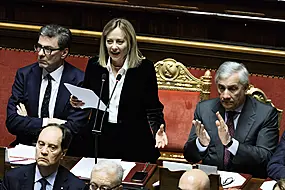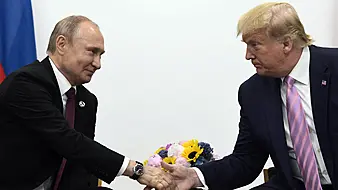Russian air defences have downed dozens of Ukrainian drones in occupied Crimea and southern Russia on Friday, officials said.
The move comes as Kyiv presses its strategy of targeting the Moscow-annexed peninsula and taking the 22-month war well beyond Ukraine’s borders.
Air raid sirens wailed in Sevastopol, the largest city in Crimea, and traffic was suspended for a second straight day on a bridge connecting the peninsula, which Moscow seized illegally a decade ago, with Russia’s southern Krasnodar region.
Latest Defence Intelligence update on the situation in Ukraine – 05 January 2024.
Find out more about Defence Intelligence's use of language: https://t.co/7zEENJIlQk #StandWithUkraine 🇺🇦 pic.twitter.com/7hf2mrXxee— Ministry of Defence 🇬🇧 (@DefenceHQ) January 5, 2024
The span is a crucial supply link for Russia’s war effort.
The Russian defence ministry said its defences intercepted 36 drones over Crimea and one over Krasnodar, part of an emerging pattern of intensified Ukrainian aerial attacks in recent days.
A Ukrainian Neptune anti-ship missile also was destroyed over the north-western part of the Black Sea, the ministry said.
The developments came after three people were injured on Thursday night by other Ukrainian rocket and drone attacks on the Russian border city of Belgorod and the surrounding region, said Belgorod governor Vyacheslav Gladkov.
Ukrainian attacks on December 30th in Belgorod killed 25 people, officials there said.
A Ukrainian attack on military facilities in Crimea on Thursday affected a command centre and the peninsula’s air defence system, according to a spokesperson for Ukraine’s southern joint forces, Nataliia Humeniuk.
She said the Russian military recently relocated its Crimean launch sites for Shahed drones.
It was not possible to verify either side’s claims.
Ukrainian president Volodymyr Zelenskiy has pledged to strike more targets on the Crimean Peninsula and inside Russian border regions this year.
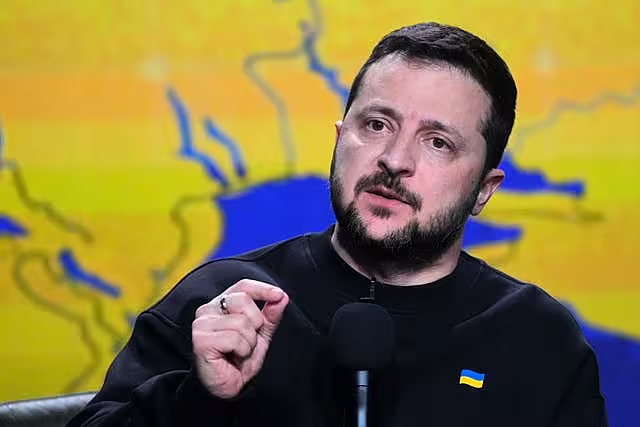
The goal is to unsettle Russians as Russian president Vladimir Putin seeks another six years in power in a March 17th election.
Following a drone strike deep inside Russia last year, Mr Zelenskiy said Ukraine had developed a weapon that can hit targets 400 miles away. He said last month Kyiv plans to produce one million drones, which have become a key battlefield weapon.
Other Ukrainian officials said it aims to manufacture this year more than 10,000 attack drones with a range of hundreds of miles, as well as more than 1,000 longer-range drones that can hit targets well behind the front line and inside Russia.
Both sides are raising the stakes of their long-range warfare as soldiers remain bogged down on the wintry battlefield.
The UK’s Ministry of Defence said “ground combat has continued to be characterised by either a static front line or very gradual, local Russian advances in key sectors”.

The Kremlin, meanwhile, has acquired ballistic missiles from North Korea and fired at least one of them into Ukraine on December 30, the White House said, citing recently declassified US intelligence.
It also is seeking close-range ballistic missiles from Iran, US National Security Council spokesman John Kirby said.
UK Defence Secretary Grant Shapps said Pyongyang would pay a high price for supporting Russia, although he did not say in what way, and he accused Moscow of violating a UN embargo on arms shipments to and from North Korea.
“The world has turned its back on Russia, forcing Putin into the humiliation of going cap in hand to North Korea to keep his illegal invasion going,” Mr Shapps said on X, formerly Twitter.
Ukraine said it stopped 21 out of 29 Russian Shahed drones launched late on Thursday and early on Friday. The assault injured two people, including a 14-year-old, and was the latest of almost daily Russian drone attacks in the new year.
On Thursday, Mr Zelenskiy thanked Germany for a delivery of military aid, especially air defence materiel that he said “is timely and focused on our priorities”.
Ukraine “should look to continue degrading Russia’s ability to wage war by conducting an escalating campaign of air strikes on targets far behind the front lines throughout occupied Ukraine and inside Russia itself”, according to Mykola Bielieskov, a research fellow at Ukraine’s National Institute for Strategic Studies.
“This could include attacks on troop concentrations, military bases, and munitions stores along with logistical hubs and armament production facilities,” he wrote in an assessment published by the Atlantic Council, a US think tank.
